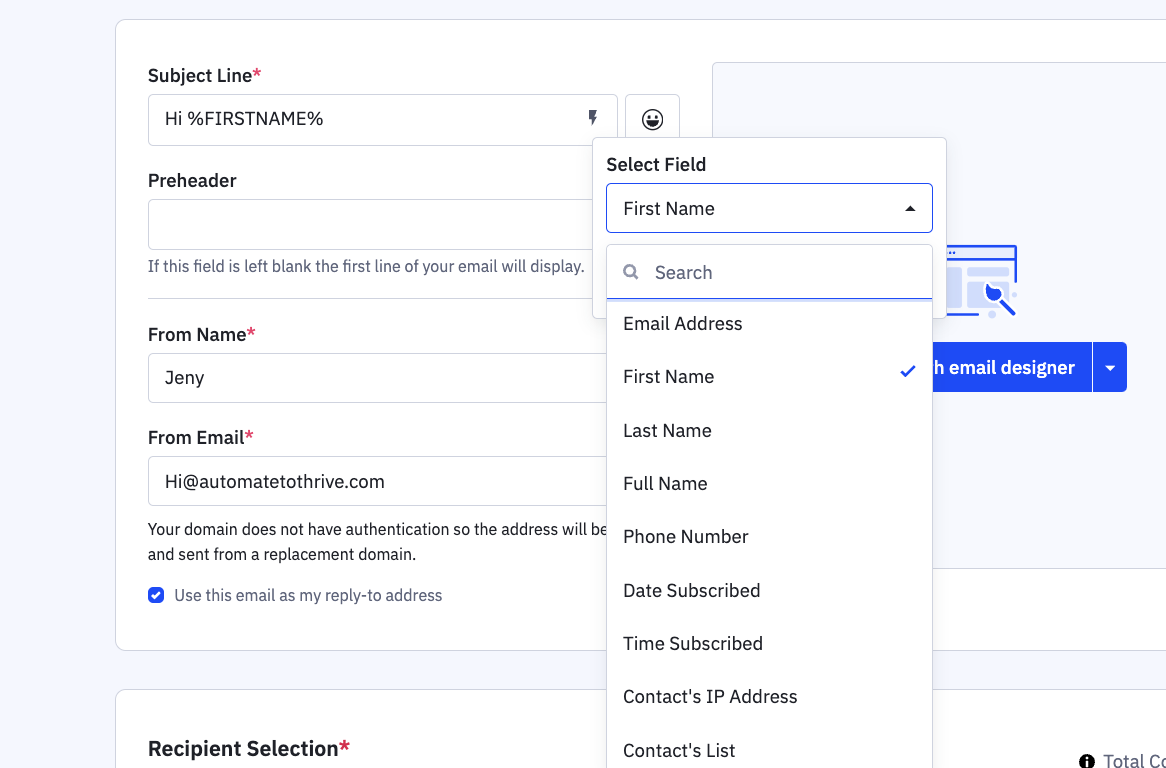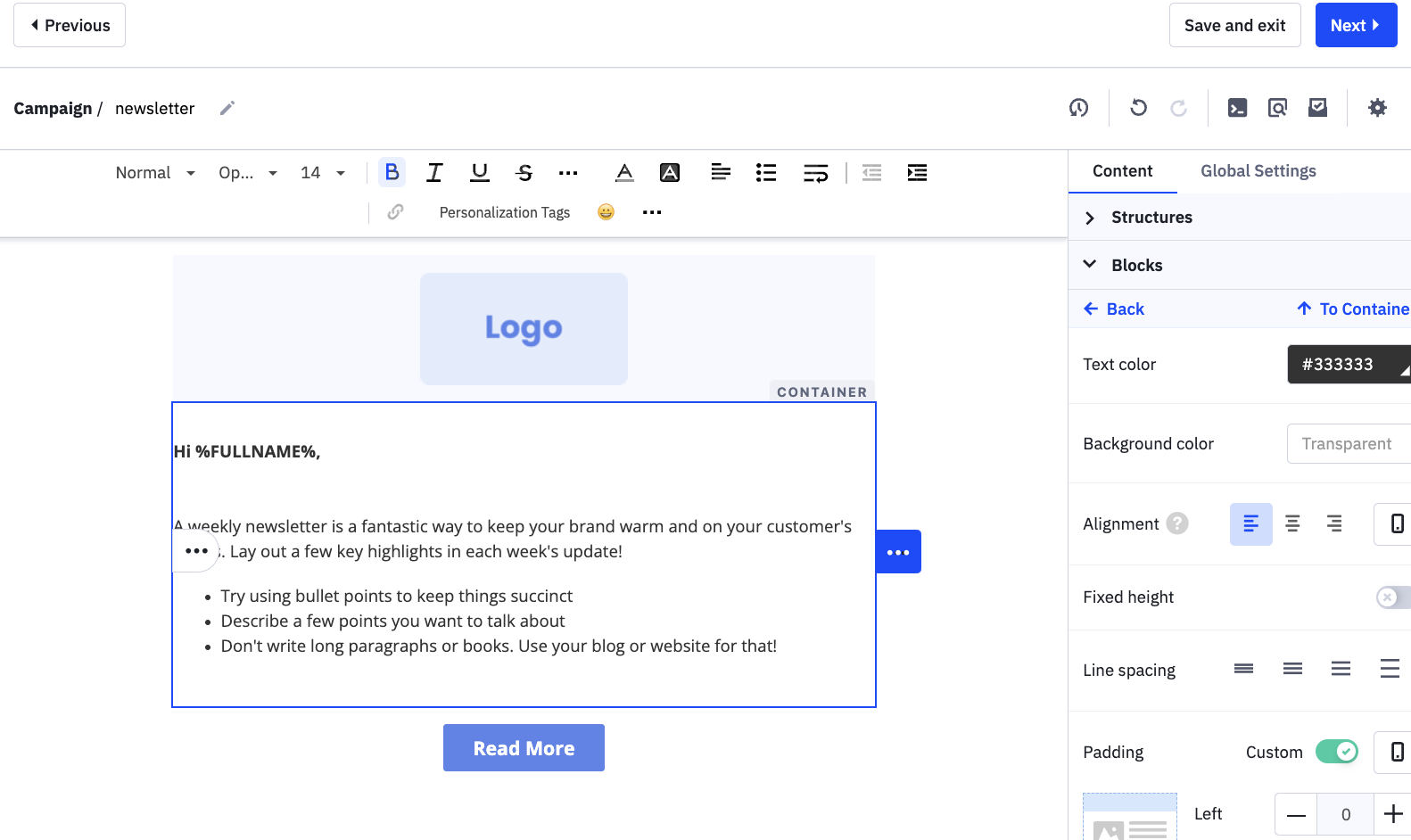How to Use Personalization Tags in ActiveCampaign
How do you want your business to stand out in a crowded market?
Is your branding and messaging truly personalized to resonate with your audience?
Are you leveraging the power of personalization to connect with your customers on a deeper level?
Recently, I came across a post by Casey Hill, a growth marketer at ActiveCampaign, highlighting a major mistake many brands make—ignoring personalization.
He shared an example of Macy’s, which misses out on billions of dollars each year because their emails lack personalization.
For instance, a male customer who buys a shirt from Macy’s might receive a follow-up email featuring a woman’s blouse. With 37% of their audience being male, this oversight is costly.
On the other hand, when Nike personalized their emails and ads, they saw an 11.5% increase in conversions, adding billions to their revenue.
The opportunity is clear—small personalization tweaks can significantly enhance customer experience and drive growth.
In this blog post, we’ll dive into the importance of personalized emails, how ActiveCampaign (AC) personalization tags work, and explore various ways you can use these tags to enhance your marketing campaigns.
The Importance of Personalized Emails
Personalized emails have become a cornerstone of effective marketing for several reasons.
First, they make your audience feel valued and understood.
When an email speaks directly to a recipient’s interests or needs, it’s far more likely to grab their attention.
Moreover, personalized emails can significantly improve your open and click-through rates.
Personalized content can lead to six times higher transaction rates.
In a world where consumers are bombarded with generic messages, personalized communication helps your brand stand out.
How ActiveCampaign Personalization Tags Work
In ActiveCampaign, personalization tags are like magic shortcuts that help you make your emails feel more personal.
Imagine you want to greet someone by their first name in an email, but you’re sending it to hundreds of people.
Instead of writing each name individually, you can use a tag like %FIRSTNAME%.
When the email goes out, ActiveCampaign automatically fills in the correct name for each recipient.
These tags aren’t just for names—you can use them to insert all sorts of details, like someone’s location or what they recently bought. It’s a super easy way to make your emails feel more like a one-on-one conversation, even when you’re sending them to a big group.
Ways to Use ActiveCampaign Personalization Tags
Personalization tags in ActiveCampaign are incredibly versatile and can be used in various aspects of your marketing campaigns. Here are some of the most effective ways to use them:
1. Direct and Automated Campaigns
In both direct (one-time) and automated campaigns, personalization tags can be used to address the recipient by name, mention specific products they’ve shown interest in, or reference past interactions. This makes your emails more engaging and relevant.
2. Preheader Text in Campaigns
The preheader text is the small snippet of text that appears after the subject line in your inbox. Personalizing this text can entice the recipient to open the email by hinting at something relevant or exciting inside.
3. Email Subject Lines
Personalizing the subject line is one of the simplest yet most effective ways to increase open rates. Including the recipient’s name or a detail relevant to them can make your email stand out in a crowded inbox.
4. 1:1 Emails
In ActiveCampaign, you can send personalized one-on-one emails directly from the platform. Personalization tags ensure that even these more informal communications feel tailored to the recipient.
5. Site Messages
Site messages are pop-ups or notifications that appear on your website. By using personalization tags, these messages can be customized based on the visitor’s behavior, making them more effective in driving conversions.
6. SMS Messages
Just like emails, SMS messages can be personalized with tags. This allows you to send targeted text messages that feel personal and relevant, improving engagement and response rates.
7. Form Fields
When someone fills out a form on your website, you can use the data they provide to create personalized follow-up messages. For example, if a form collects their name and preferences, you can use those details in subsequent communications.
8. Thank You Messages for Forms
After someone submits a form, a personalized thank-you message can make a great impression. Use personalization tags to address them by name and confirm the details they’ve submitted.
9. "Dear" Titles
Whether you’re sending a formal communication or a more casual email, personalization tags allow you to greet your recipients appropriately (e.g., "Dear %FIRSTNAME%" or "Hi %FIRSTNAME%").
How to Modify Personalization Tags
ActiveCampaign makes it easy to modify personalization tags to fit your needs.
You can customize the data fields in your contact records to capture specific information that you want to use in your emails. For example, if you run a travel agency, you might create custom fields for "Preferred Destination" or "Last Trip Date."
To modify a personalization tag, simply update the corresponding field in the contact’s record. The next time you use that tag in an email, it will pull in the updated information.
How to Insert Personalization Tags into Your Campaigns
Inserting personalization tags into your ActiveCampaign emails is straightforward. Here’s how you can do it:
Open your email template: Start by opening the email template where you want to add personalization.
2. Click on the spot where you want to insert the tag: Place your cursor where the personalized content should appear.
3. Insert the tag: Use the "Personalization" dropdown or type the tag manually (e.g., %FIRSTNAME%).
4. Preview the email: Always preview your email to ensure the tags are working correctly. ActiveCampaign provides a "Preview" option that shows how the email will look for each recipient.
How to Set Up Custom Fields
Custom fields in ActiveCampaign allow you to collect and use additional information about your contacts. Here’s how to set them up:
Navigate to the Contacts section: Go to the "Contacts" tab in your ActiveCampaign dashboard.
2. Create a custom field: Click on "Manage Fields" and then "Add Field." Choose the type of field you want (e.g., text, dropdown, date).
3. Name your field: Give your custom field a descriptive name that reflects the data it will store.
4. Save and use: Once your custom field is created, you can start using it in your personalization tags (e.g., %CUSTOMFIELD%).
What Are the Benefits of Personalization in Email Marketing?
Increased Engagement. Personalized emails are more likely to be opened and clicked on, leading to higher engagement rates.
Improved Conversion Rates. When emails are tailored to the recipient’s interests and behavior, they are more likely to take the desired action, such as making a purchase.
Stronger Customer Relationships. Personalized communication fosters a stronger connection between your brand and your customers, leading to increased loyalty and repeat business.
Better Data Utilization. By using personalization tags, you can make the most of the data you collect, turning it into actionable insights that drive results.
Final Thoughts
Personalization is no longer just a nice-to-have in email marketing; it’s a must-have. By using personalization tags in ActiveCampaign, you can make your emails more engaging, relevant, and effective.
Whether you’re personalizing subject lines, preheader text, or the body of your emails, these small touches can make a big difference in how your messages are received. Start implementing personalization tags today, and watch your engagement and conversion rates soar.
FAQs
How do personalization tags work in ActiveCampaign?
Personalization tags in ActiveCampaign are placeholders that automatically pull specific information from your contact records into your emails, making them more personalized and relevant.
Can I use personalization tags in SMS messages?
Yes, you can use personalization tags in SMS messages to make your text communications more targeted and engaging.
What happens if a contact’s data is missing for a personalization tag?
If a contact’s data is missing for a particular personalization tag, ActiveCampaign will typically leave that space blank or allow you to set a default fallback value to ensure the email still reads smoothly.














